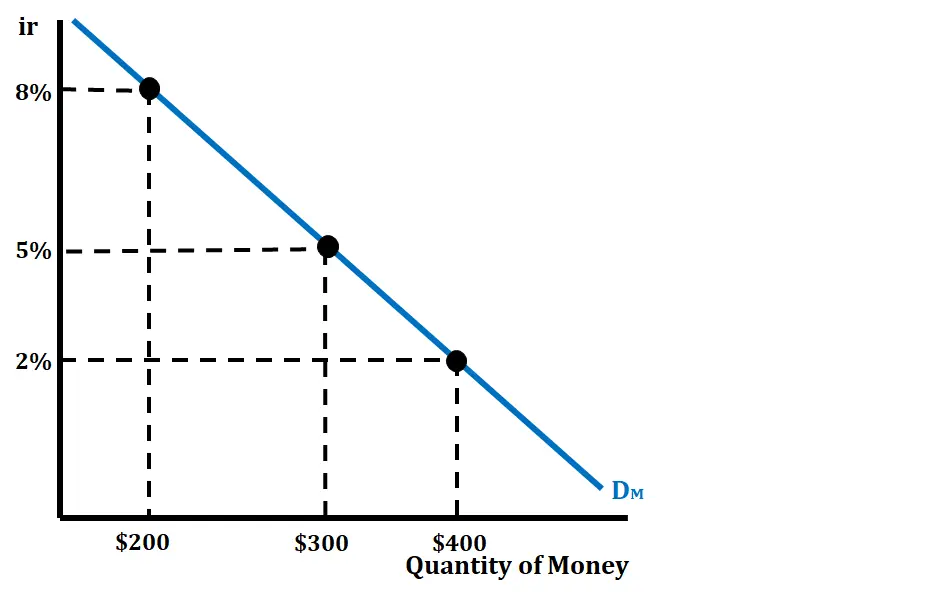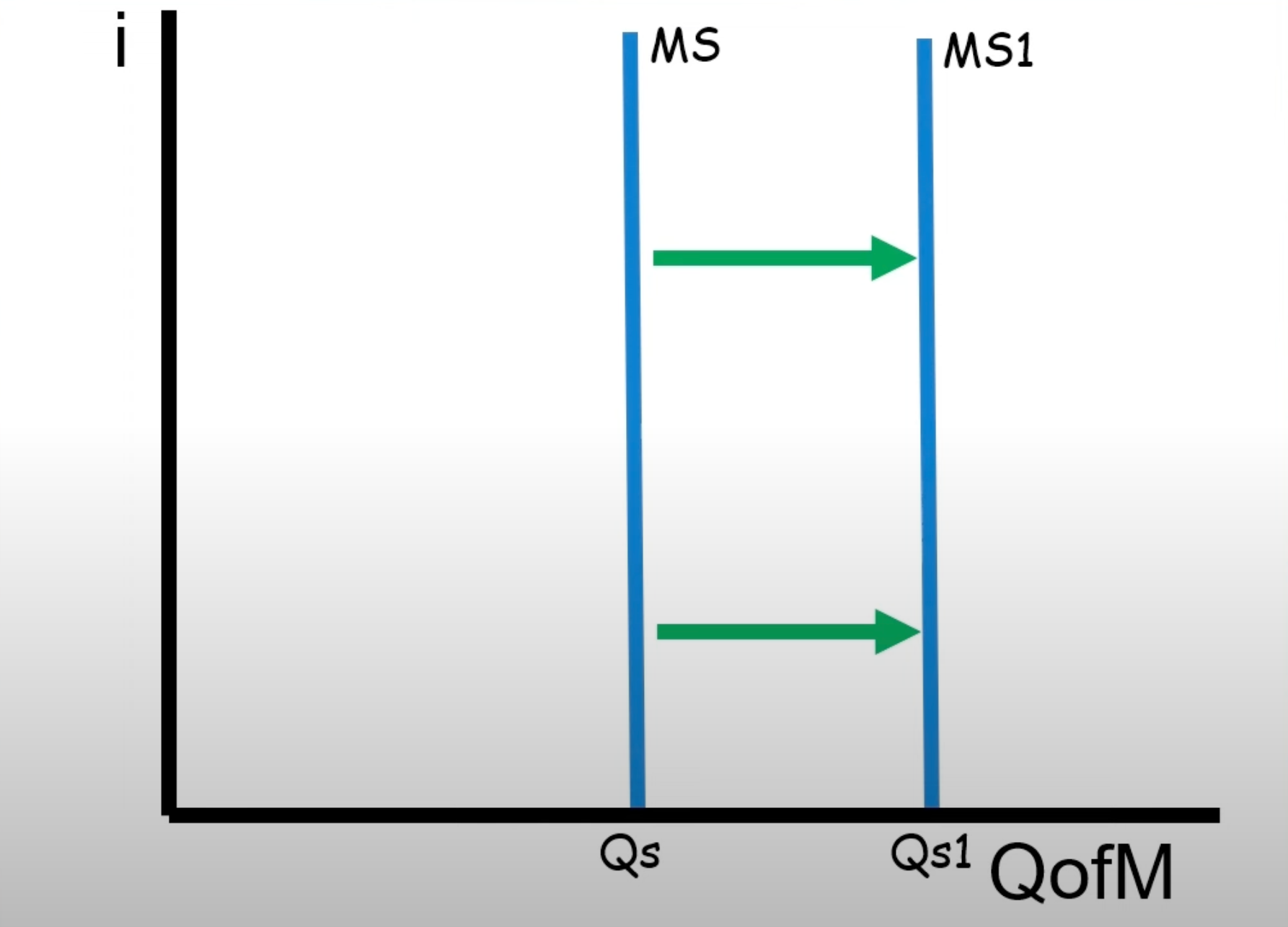People like liquid assets (cash) but these don’t have returns through interests. As a result, there is an asset demand for money which refers to the desire for people to hold wealth as money instead of other assets. Thus, people have a choice to either:
- Hold their wealth as interest-bearing assets like bonds and stocks
- Hold their wealth in cash
Asset Demand for Money
There is an inverse relationship between quantity of money and the nominal interest rate because the interest is essentially the opportunity cost of keeping your money in cash. If there are high interest rates, keeping your money in cash means you lose potential gains through interest. It is visualized by the money market graph:

When interest rates are low, more people will choose to keep their money as cash.
Transaction Demand for Money
The transaction demand for money refers to the need of money to process transactions in the economy. When any of the GDP components (, , , ) change, then the transaction demand for money changes. Price level and expected inflation also changes the transaction demand for money. This is because: when things cost more, it takes more money to process the same transactions.
An increase in:
- , , ,
- Price level
- Inflation expectations
- Desire to hold wealth as money will all correspond with a rightward shift of the demand curve. In contrast, a decrease in any of the above components will correspond with a leftward shift of the demand curve
Money Supply
The money supply is determined by actions of the central bank. Since the supply of money is largely defined by actions of the central bank, there is a vertical money supply curve.
An increase in:
- Lending
- Expansionary Monetary Policy
will correspond with an increase in the supply of money, which shifts the curve right.

A decrease in either will correspondingly shift the curve left.
Equilibrium Interest Rate
When we graph the money supply and the money demand curve together, we can find the equilibrium interest rate. If the interest rate is greater than the intersection, then the quantity of money demanded is less than the quantity supplied—which will push interest rates down towards the equilibrium. If the interest rate is below the intersection, then the quantity of money demanded is more than the quantity supplied—which will push interest rates up towards the equilibrium.
Similarly, an increase or decrease in the money supply will shift the money supply curve, and an increase or decrease in the asset and transaction demand for money will shift the money demand curve. All of these have effects on the equilibrium nominal interest rate and quantity of money demanded.